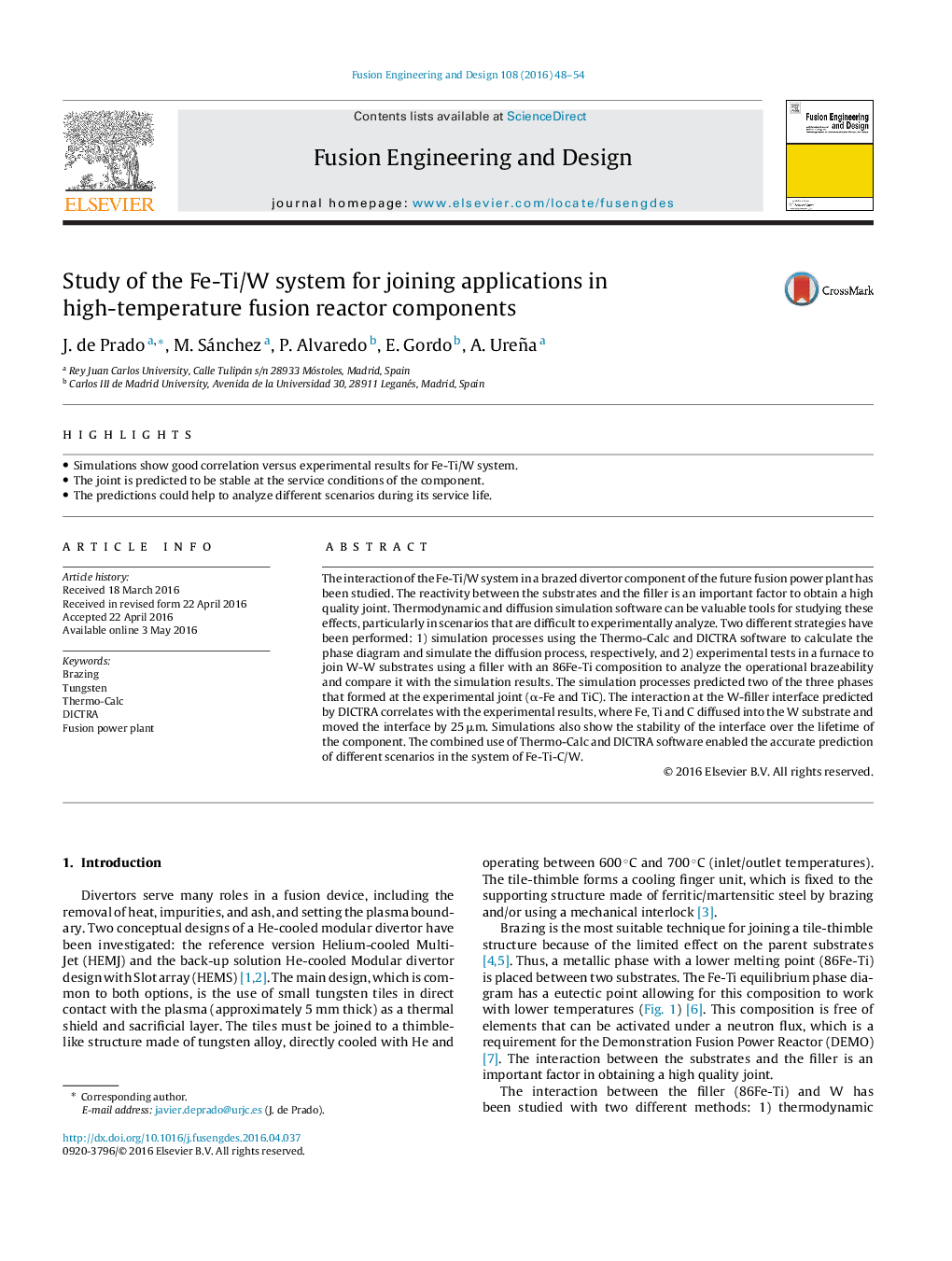| Article ID | Journal | Published Year | Pages | File Type |
|---|---|---|---|---|
| 270846 | Fusion Engineering and Design | 2016 | 7 Pages |
•Simulations show good correlation versus experimental results for Fe-Ti/W system.•The joint is predicted to be stable at the service conditions of the component.•The predictions could help to analyze different scenarios during its service life.
The interaction of the Fe-Ti/W system in a brazed divertor component of the future fusion power plant has been studied. The reactivity between the substrates and the filler is an important factor to obtain a high quality joint. Thermodynamic and diffusion simulation software can be valuable tools for studying these effects, particularly in scenarios that are difficult to experimentally analyze. Two different strategies have been performed: 1) simulation processes using the Thermo-Calc and DICTRA software to calculate the phase diagram and simulate the diffusion process, respectively, and 2) experimental tests in a furnace to join W-W substrates using a filler with an 86Fe-Ti composition to analyze the operational brazeability and compare it with the simulation results. The simulation processes predicted two of the three phases that formed at the experimental joint (α-Fe and TiC). The interaction at the W-filler interface predicted by DICTRA correlates with the experimental results, where Fe, Ti and C diffused into the W substrate and moved the interface by 25 μm. Simulations also show the stability of the interface over the lifetime of the component. The combined use of Thermo-Calc and DICTRA software enabled the accurate prediction of different scenarios in the system of Fe-Ti-C/W.
